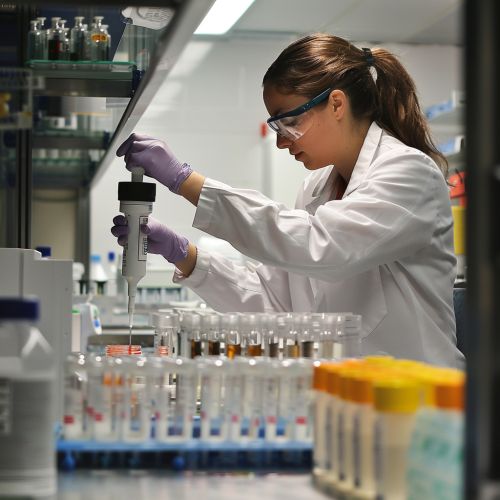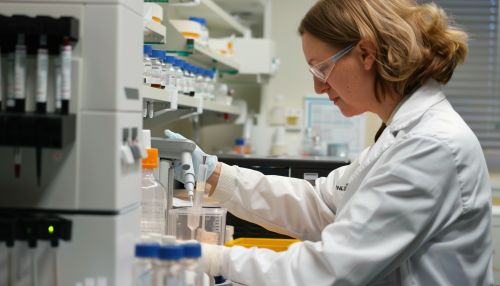Protein extraction
Introduction
Protein extraction is a set of methods used to isolate individual proteins from a complex mixture such as a cell lysate. This process is a crucial step in many biological and biochemical research studies, allowing scientists to analyze the protein's structure, function, and interactions with other molecules. Proteomic studies often rely heavily on protein extraction techniques to identify and quantify proteins in a given sample.
Principles of Protein Extraction
Protein extraction involves the disruption of the cell to release its contents, followed by a series of purification steps to isolate the protein of interest. The choice of extraction method depends on the type of cell (e.g., bacterial, mammalian, plant), the location of the protein within the cell (e.g., cytoplasmic, membrane-bound), and the intended downstream applications (e.g., mass spectrometry, Western blotting).


Cell Disruption
The first step in protein extraction is cell disruption, which breaks down the cell wall or membrane to release the proteins contained within. There are several methods of cell disruption, including mechanical disruption, enzymatic lysis, and detergent lysis.
Mechanical Disruption
Mechanical disruption involves physically breaking down the cell wall or membrane. This can be achieved through various methods such as sonication, bead beating, and high-pressure homogenization. These methods are often used for tough cell types, such as plant and bacterial cells, which have rigid cell walls.
Enzymatic Lysis
Enzymatic lysis uses enzymes to break down the cell wall or membrane. This method is often used for mammalian cells, which have a softer, lipid-based cell membrane. Common enzymes used for this purpose include lysozyme and trypsin.
Detergent Lysis
Detergent lysis uses detergents to solubilize the cell membrane, allowing the proteins to be released. This method is often used for membrane proteins, which are embedded in the lipid bilayer of the cell membrane.
Protein Purification
After cell disruption, the resulting mixture (known as the cell lysate) contains a complex mixture of proteins, nucleic acids, lipids, and other cellular components. The next step is to purify the protein of interest from this mixture. This is typically achieved through a combination of precipitation, chromatography, and electrophoresis.
Protein Precipitation
Protein precipitation involves the use of salts or organic solvents to cause the proteins to aggregate and precipitate out of solution. This method is often used as a preliminary step to reduce the complexity of the sample.
Chromatography
Chromatography is a method used to separate proteins based on their physical or chemical properties. There are several types of chromatography, including size-exclusion chromatography, ion-exchange chromatography, and affinity chromatography.
Electrophoresis
Electrophoresis is a method used to separate proteins based on their size and charge. The most common form of electrophoresis used in protein extraction is polyacrylamide gel electrophoresis (PAGE).
Applications of Protein Extraction
Protein extraction is a fundamental technique in many areas of biological and biochemical research. It is used in proteomics to identify and quantify proteins in a given sample. It is also used in structural biology to determine the three-dimensional structure of proteins. In addition, protein extraction is used in functional assays to study the activity of proteins and their interactions with other molecules.
Challenges and Considerations
While protein extraction is a powerful technique, it also presents several challenges. One major challenge is the risk of protein degradation during the extraction process. To mitigate this risk, protease inhibitors are often added to the extraction buffer. Another challenge is the difficulty of extracting membrane proteins, which are often insoluble in aqueous solutions. To overcome this challenge, detergents or organic solvents are often used to solubilize the proteins.
